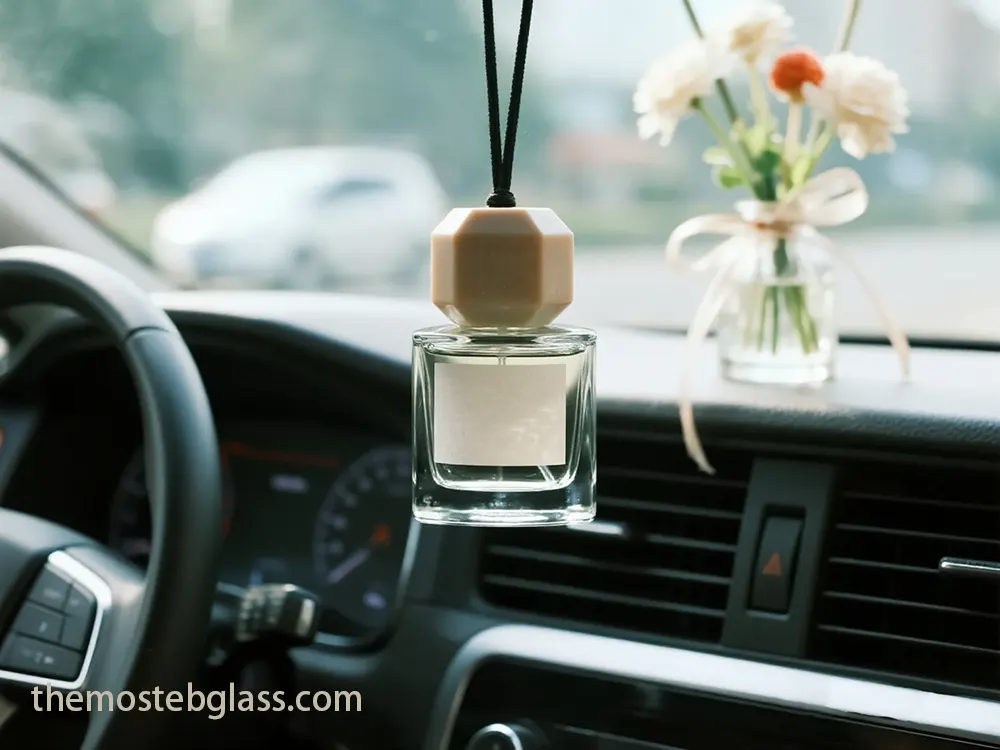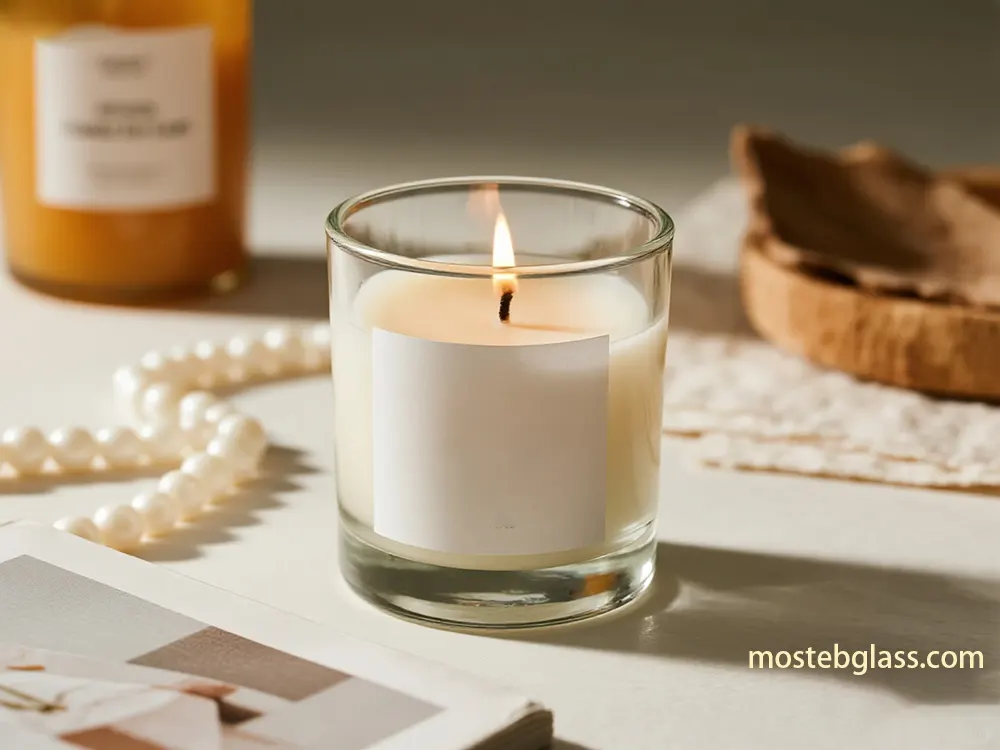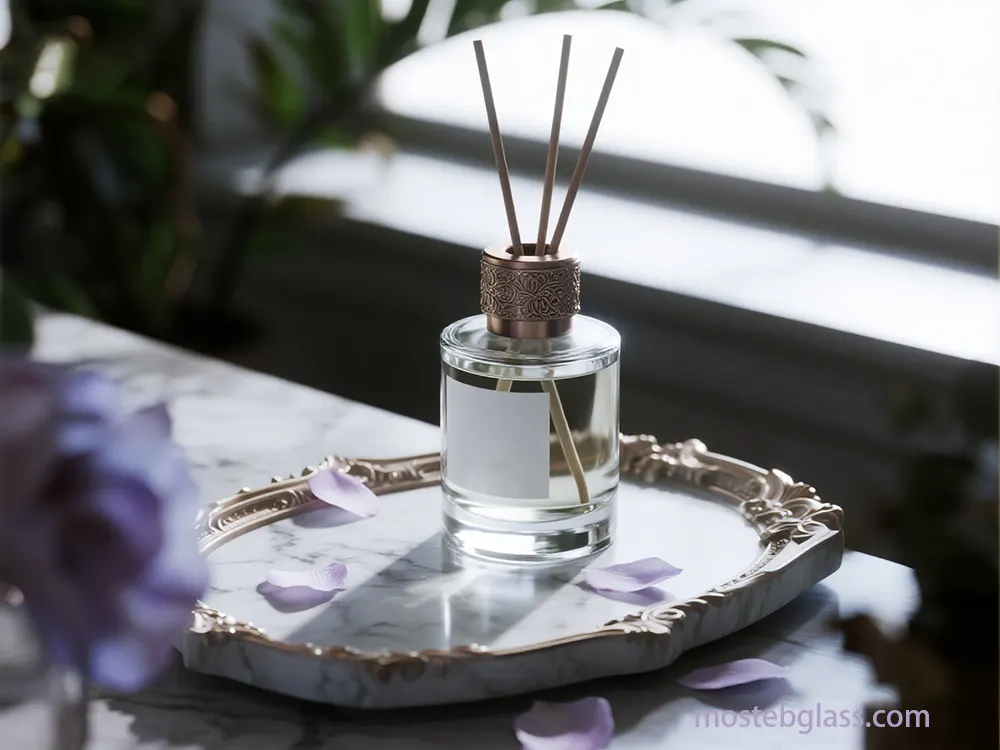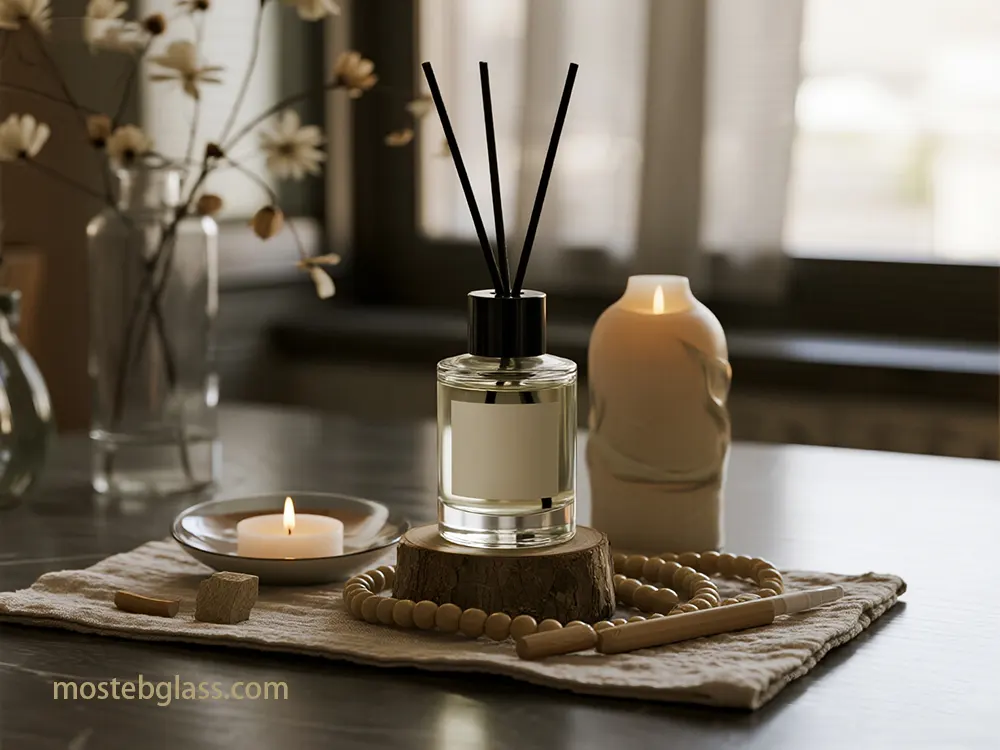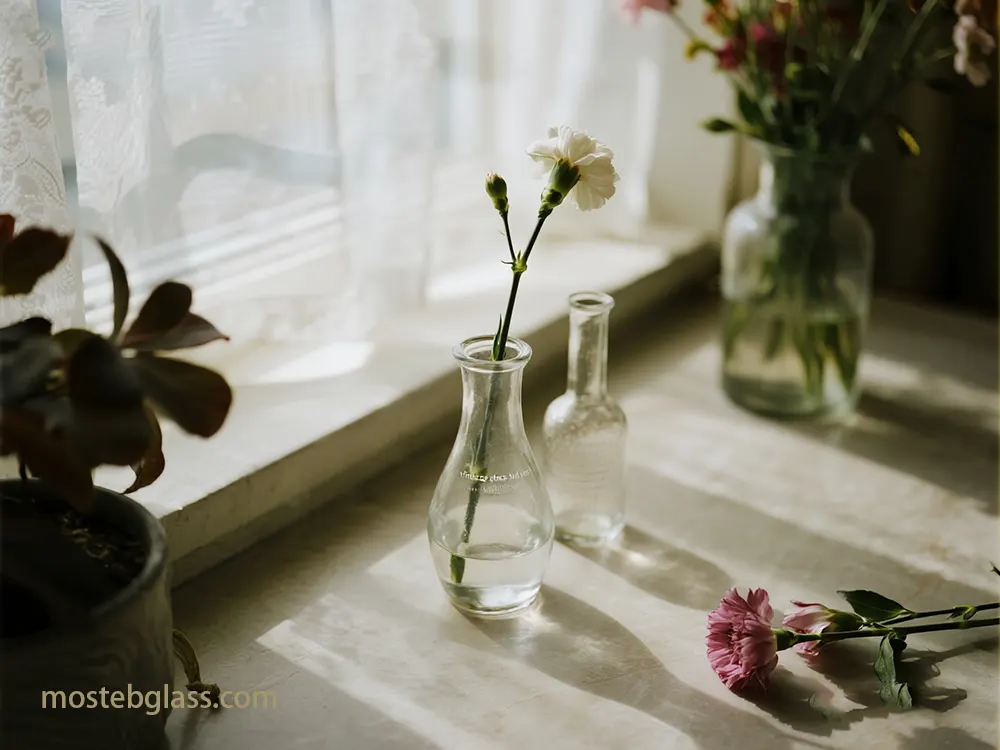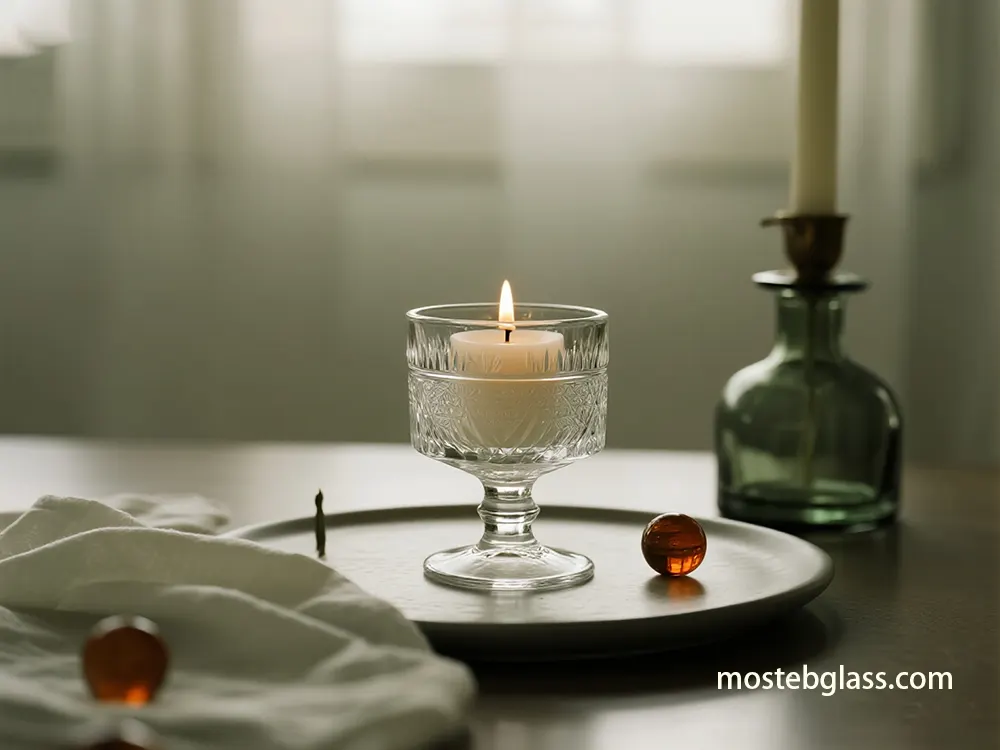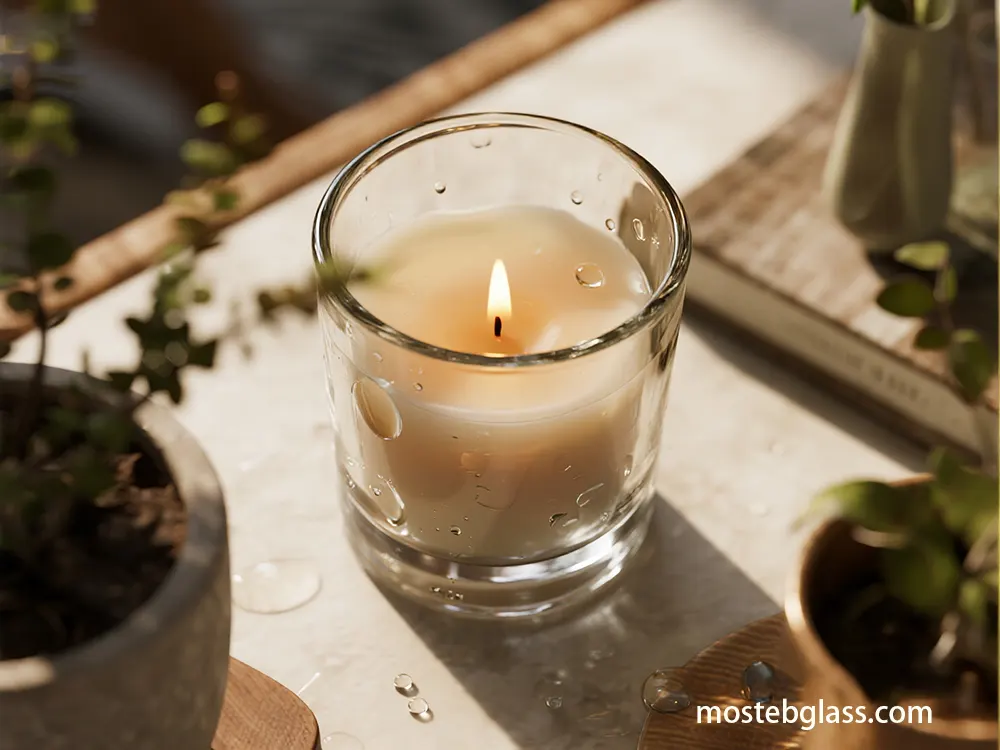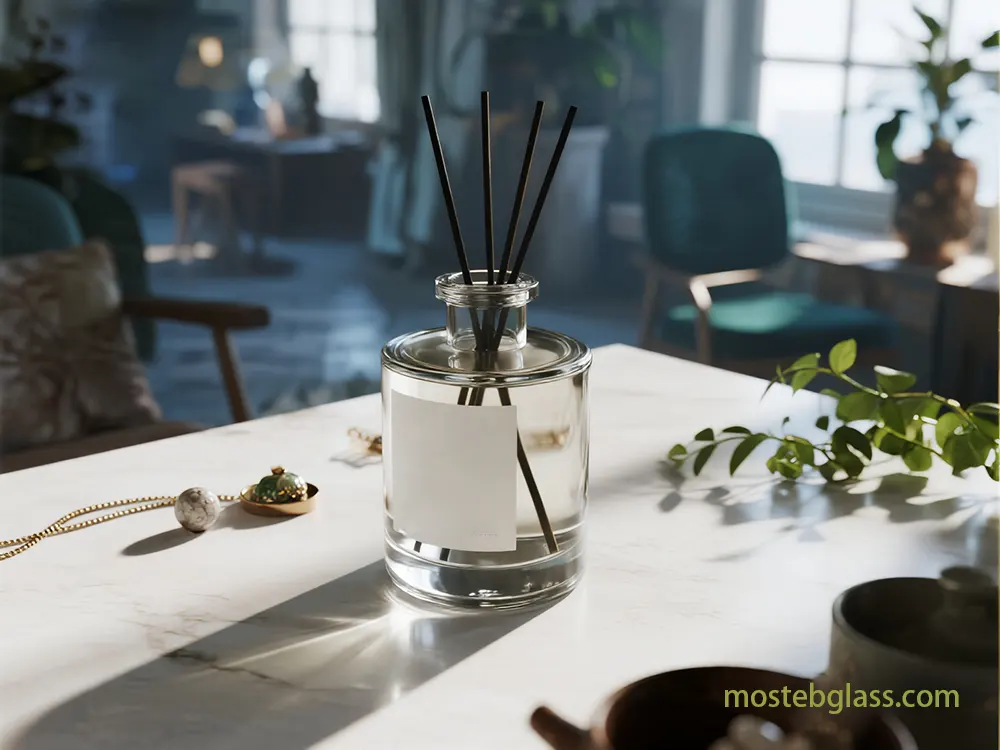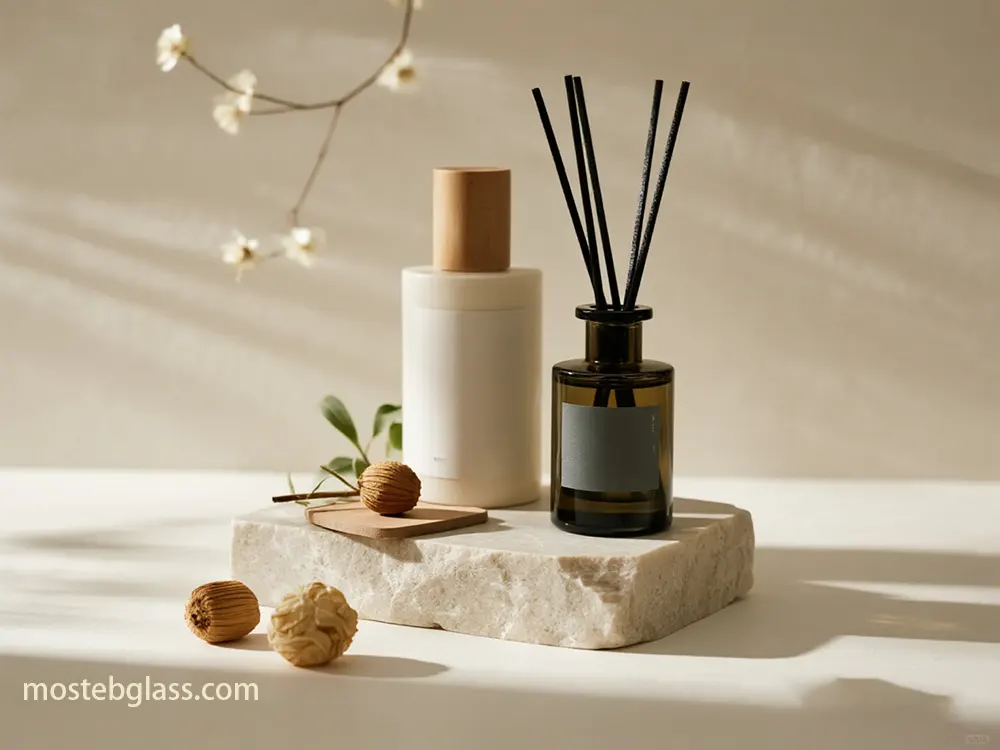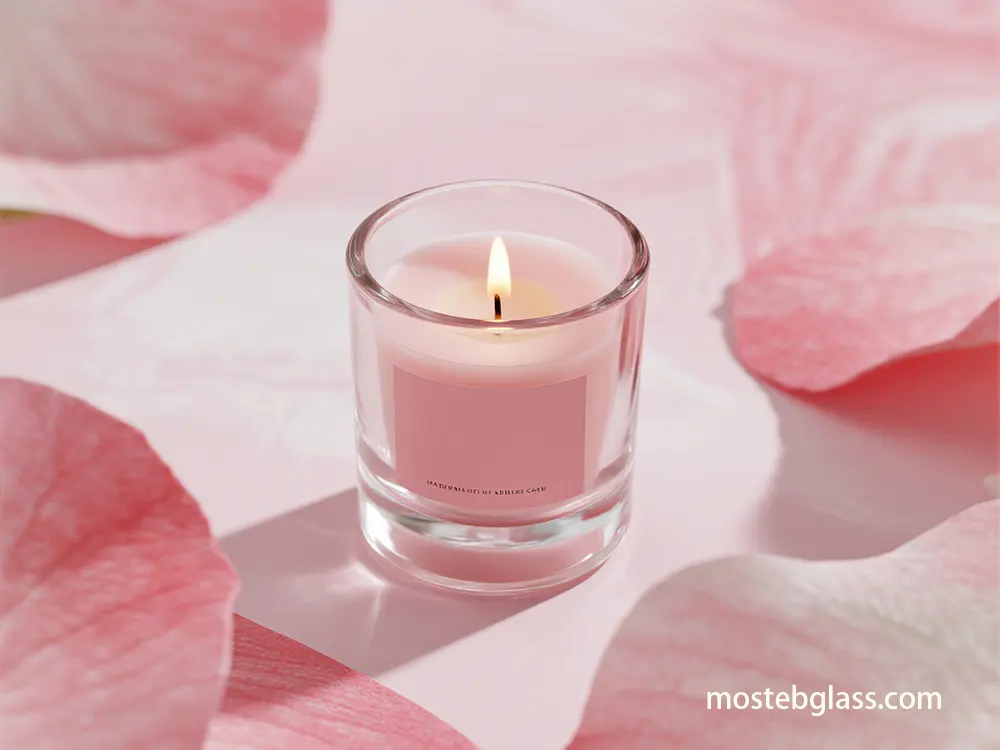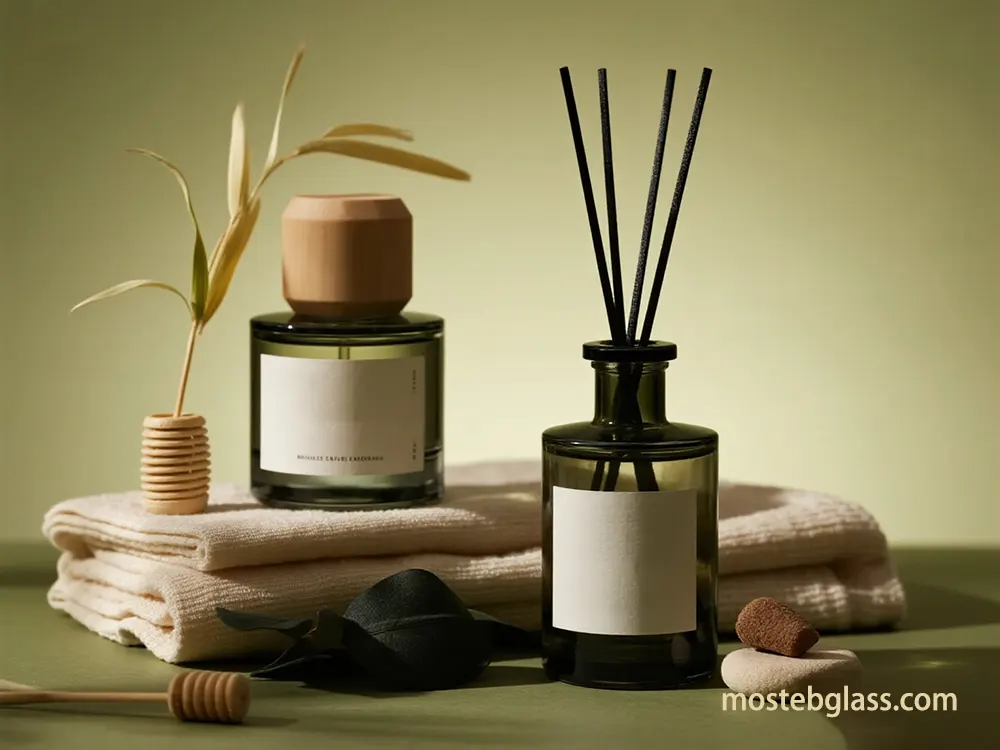This report examines a permanent appeal for glass blown christmas ornaments in Global Holiday Retail. Origin of the 19th century in Germany, these decorations cross generations through cultural importance, emotional connections and unique aesthetics. Christmas decoration markets are estimated to reach the price of USD 6 billion in 2024 and USD 8.06 billion by 2033, dominating glass ornaments due to complex designs and vintage attractions.Despite the seasonal and economic ups and downs, their premium status has been retained by artisan craftsmanship, strategic pricing and immersive retail. The industry emphasizes stability, privatization and technology operated by youth demographics. Future demand for unique, environmentally friendly and adaptable glass ornaments provides important opportunities for brands such as moral manufacturing, digital engagement and hirloom quality to innovate and strengthen the presence of the market.
1.Introduction
The holiday weather increases a strong global market for festive decoration. Of these, glass blown christmas ornaments stands out for its permanent attraction, which attract consumers with delicate beauty and indifferent attractions. This report discovers his “timeless appeal,” aesthetics, emotional, cultural and economic factors. Our analysis includes luxury, mass-market and online retail segments globally, detecting historical development, current market dynamics and future trends. Primary objective is to identify consumer drivers, evaluate retailer strategies for premium positioning, and address manufacturing challenges and opportunities in craftsmanship, innovation and stability. Mosteb is committed to quality and design, well deployed to redeem these insights.
2. Historical & Cultural Foundations of Enduring Appeal
In 1847, the journey of glass blown christmas ornaments began in Lauscha, Germany. From a Glassworks family, Hans Greiner first designed hollow glass baubles, which offers an inexpensive option for real food decorations. Queen Victoria and Prince Albert adorned their Christmas tree in 1848 with German glass ornaments, leading to a trend in Europe and America. American retailer F.W. Woolworth made him more global, after selling millions of millions annually by 1890, early German designs attracted from nature – foots, nuts, pine cones, birds, mushrooms, icons – good abundance and home connections. For example, acorn represented strength and good luck.
World wars greatly influenced the industry. German exports collapsed during WWII, and British barriers stopped American imports. This marketed American companies as “glossy-bright” to adapt to large-scale productive clear glass baubles such as Corning Glassworks. The lack of war time also left silver nitrate and used paper cap around 1943. Till 1944, Corning produced 40 million glass ornaments annually. During the W-WWII and the Cold War, the Lusha workshops were nationalized under the East German Communist rule. Artisans, including the founder of Inge-Glas, transferred to West Germany to establish new features.
For centuries, the design developed to complicate the Victorian pieces from simple natural forms, then fig ornaments and “dresdens.” The fickle designs were brought in the mid -20th century, while the revival in ancient styles with modern, personal and environmentally friendly options was seen in the late 20th and 21st centuries. Beyond Germany, the Czech Republic and Poland also developed important glass ornaments industries, known for complex painted baubles and sculptures. Hand -blowing, technological progresses such as “Glass Ribbon Machine” (US, 1950s) enabled mass production, with 87% Christmas decorations on a large scale by 2021.
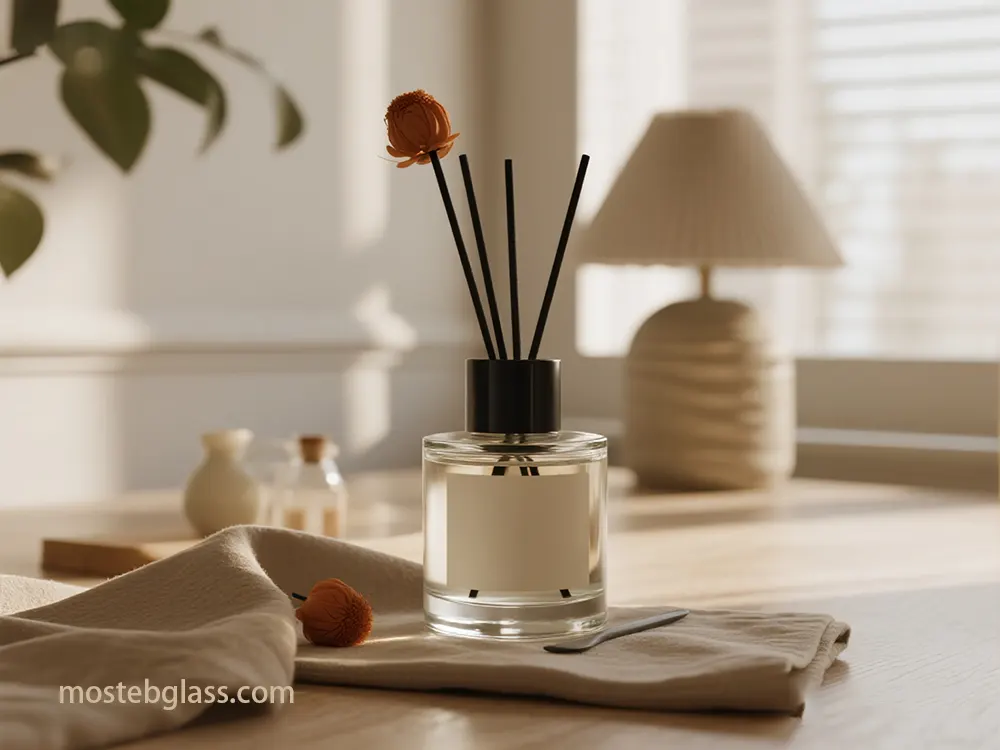
3. Consumer Psychology: Aesthetic, Emotional, and Nostalgic Drivers
The permanent appeal of glass blown christmas ornaments stems from consumer psychology, which is powered by indifference and emotional relationship. Consumers buy holiday decorations to instigate the previous Christmas and rebuild the nutritional childhood celebration, increasing the growing price significantly. Visual stimulation of lights and colors stimulate the pleasure centers. Decorating yourself can be meditation and stress reducing. For many people, the value of the content of symbolic value of jewelery, connects individuals to the past, loved ones, and shared experiences.
This reflects the desire to pass rituals and rebuild previous magic, underlining the heir quality of glass-covered ornaments. Historical importance and centuries -old craftsmanship further enhanced the heroleom appeal, causing them to resonate unique, rare and emotionally. Aligning with desires to please the urgency, to please loved ones and to redeem indifference.Storytelling is a powerful marketing tool for indifferent products, manufacturing brands and community connections by developing childhood memories. Both brand-generated and consumer-related stories are effective, later often increase strong positive brand approaches. The holiday holiday atmosphere in the brand logo also affects the preference for indifferent products by producing more childhood imagination. Demographicly, women lead holiday decorating (64% purchase vs. 58% men). There is more likely to purchase between the age of 25–54 years, with high-ion (> $ 50,000) and with large homes with children. Trend bicycle causes fatigue, quality glass-turning ornaments, such as Mosteb, offer endings pieces that cross the FAD. Indifferent consumption also serves as an emotional regulation strategy, providing comfort during low safety or negative emotions. Classic imagery, using colors and designs, provokes holiday packaging, provoking apathy, forms anticipation, and affects the purchase.
4.Market Dynamics & Retailer Strategies for Premium Positioning
Global glass blown christmas ornaments market is significant and growing, with 2024 estimates from 5.06 billion to USD 22.89 billion, and 2025 USD is estimated between 5.62 billion and USD 15 billion. It should reach USD 7.6 billion by 2030 to reach 7.32 billion to 7.6 billion. With complex design and vintage attraction.
4.1. Regional Market Dynamics:
- North America ~ 39% market share ($ 3,200 million in 2024, with ornaments $ 4,600 million by 2035).
- Europe follows with 31% shares, operated by historical markets and with the demand for traditional handcraft items. Germany has 5.99%, UK 4.08% (2025).
- Asia-Pacific (APAC) increasingly emerges with 21%, as primary production hub; China dominates manufacturing at 12.25% global market share in 2025.
- Middle East and Africa account for 9%.
4.2. Retail Channel Segmentation:
Online Retail is a major channel, with 61% global sales and 63% US sales shifting online. North America sees 66% of consumers who buy decorations through e-commerce. Nevertheless, the physical stores are preferred by consumers in 2024, indicating important roles for both channels.
4.3. Key Market Drivers:
- Consumer demand for permanent (55%) and individual (34%) decorations runs 57%of the increase in demand market.
- Rapid e-commerce adoption expands the market access.
- Increasing disposable incomes,strong traditions, urbanization and increase in western custom.
- Commercial investment (59% increase) promotes engagement.
4.4. Key Market Restraints:
- High seasonality (87%of sales in Q4) makes dependence on holiday expenses and market instability.
- Economic instability, inflation, and reduced disposable income are important restrictions (69% of consumers cite budget/inflation).
- Environmental concerns on non-tricky materials face challenges.
4.5. Retailer Strategies for Premium Positioning (Mosteb):
For luxury glass blown Christmas ornaments, strategies increase the perceived price and create exclusive experiences:
- Exclusivity:Offer limited versions and emphasize artisan craftsmanship. Brands like G.DeBrekht highlight hand -paint, handblown glass in magnificent packaging, which leads to deficiency and cirloom value.
- Prestige Pricing: Determine prices depending on the perceived price, not only the cost, adding high cost with better quality. Avoid discount; Round prices for sophistication.
- Immersive Retail: Changing the atmosphere in “holiday wonderlands” with festive scents, lights and music. Interactive experiences (DIY workshops, AR try-ons) increase time.
- Bespoke Services: Offer custom-made products or sewn experiences (design consultation, engraving, unique color combinations).
- Strategic Packaging: Custom luxury packaging is important for premium appearance and unboxing. It should embodory brand identity with high quality materials and innovative designs.
- Digital Storytelling: Use digital platforms for high quality scenes and immersive online experiences. Emphasis on heritage, craftsmanship and emotional appeal. AI chatbots and QR codes can increase shopping.
- Influencer Marketing: Strategic partnerships with celebrities and influencers increase and arrive, especially produce buzz with young consumers.
- Supply Chain Transparency: Modern consumers demand moral sourcing and stability. Blockchain technology offers sales from raw materials, building trusts and safe records for storytelling.
- Brand Heritage:To connect consumers with the legacy of the brand, cultivate rich heritage and hypnotic narratives, promote emotional bonding and loyalty through authenticity and tradition.
- Differentiation:Apparently define the unique value proposals, identify market gaps, and highlight the specific characteristics echoing with the target audience.
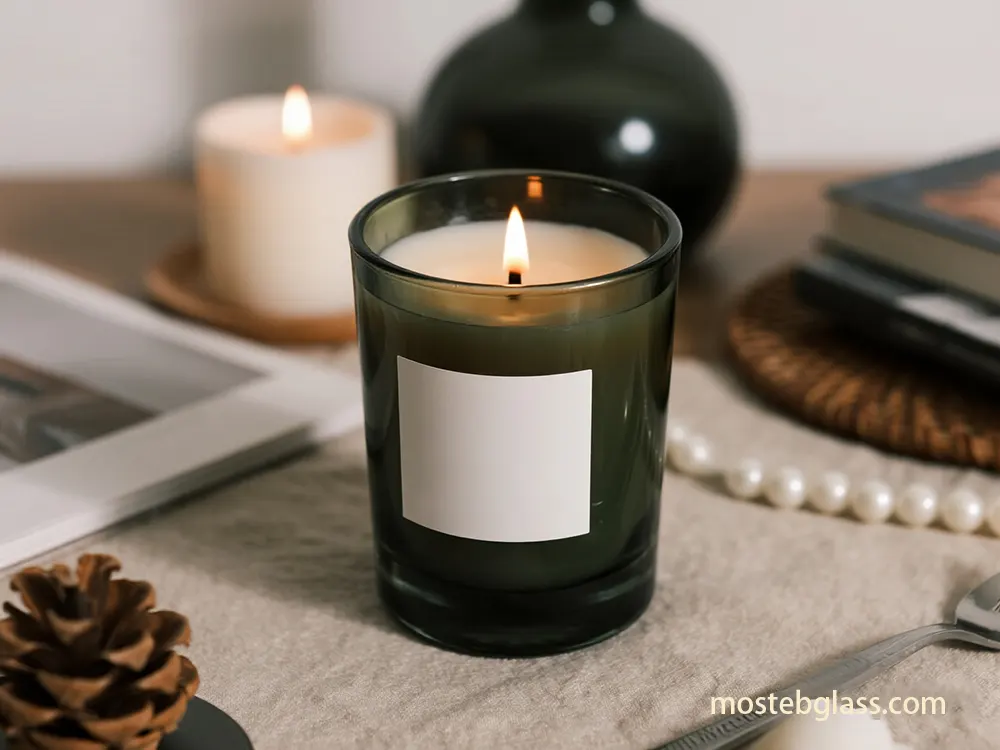
5. Manufacturing & Supply Chain: Craftsmanship, Innovation, and Sustainability
Glass blown christmas ornaments production balances traditional craftsmanship with modern innovations, especially in stability.
5.1. Craftsmanship and Traditional Techniques
The traditional hand blowing artisans remain central for production. Glass tubes are heated to ~ 1000 ° C (1832 ° F), then flew and shaped, often in molds, for complex design. Hand-painting and decoration add unique character and value.
5.2. Manufacturing Challenges
- Lack of efficient labor: Glass industry struggles to recruit and maintain efficient glassblowers affecting production. The US estimated the requirement of 8,300 glass blowers in the next decade, due to large -scale retirement, with low public awareness about these career.
- Price volatility of raw materials: Industry is unsafe for the cost of ups and downs for soda ash, silica, and coatings. Geopolitical events and supply chain disruptions cause unpredictable pricing. European float glass prices almost double (2021–2023), and US glass prices increased by 7.3% year-year (September 2024).
- Logistics and delicateness: Shipping is challenging due to damaging sensitivity to delicate glass ornaments. Inadequate packaging causes significant breakdown (34%of packaging-related returns).International shipping connects customs and documentation complications.
- Intellectual Property (IP) Protection: Artisans are unsafe for handicrafts cheating. Copyright (original design, 70 years of death of the writer), design rights (beauty aspects, up to 25 years), and trademarks (brand recognition) can protect unique designs and prevent forgery.
5.3. Innovation and Sustainability Initiatives
The industry focuses on rapidly permanent practices:
- Recycled Glass (Cullet): Recovery reduces the needs of virgin material and energy consumption by ~ 30%. Each tonnectate saves 580–670 kg CO2. Brands such as Pernille Bülow use industrial or window glass.
- Energy-Efficient Technologies: Innovations include low temperature melting and energy-efficient furnaces with advanced insulation, which saving significant energy.
- Renewable Energy: Electric, hydrogen-fueled and biofuel furnaces, plus green ammonia cracking to decurbonize industry production. Saint-Gobain and NSG Group test 100% hydrogen melters, potentially cut the CO2 up to 80%.
- Non-Toxic Paints: Ensure water-based, xylene-free, non-types of paint safe products.
- Circular Economy: Glass is 100% infinite recycled. The purpose of “Close the Glass Loop” is to increase the collection, but recycling ecosystems and government support remains intervals.
- Regulatory Pressures: Increased ESG criteria, CO2 pricing, and European Union reporting obligations run decarbonization investments.
- Consumer Demand: Increasing consumer preference for permanent products (91% of European Millionals is environment-conscious) enhance the demand for environmentally friendly glass ornaments.
- Emerging Materials:“LionGlass,” a crack-resistant glass, can enable light products and reduce carbon footprints. Nathan Allan Glass Studios reused de-temporated glass.
- “Glass as a Service”: A contrasting model where glass products are hired and returned to reuse/recycling, which ensures consistent material return.
5.4. Opportunities and Risk Mitigation
- Fair Trade Certifications: Ensure moral sourcing and fair artisans compensation, support livelihood and sustainable development. Art Glass Haven offers fair trade glass art.
- Direct-to-Consumer (DTC): Blockchain strengthens artisans through DTC platforms, reduces middlemen, reduces costs, and increases profit margins, promotes artisan-consumer connections.
- Regional Specialization:The leverage of the cultural heritage and unique skills of the famous Glassboling regions (e.g., Lauscha, Tonalá) for specific, high-value products.
- Enhanced Packaging: Invest in high quality packaging (bubble wrap, foam inserts) and train personnel to reduce breakage.
- Supply Chain Visibility: Apply VET partner, tracking (GPS, RFID), and diversity in sourcing/production to reduce dependence and reduce price/geopolitical risks.
- Technology for Transparency: Blockchain for traceability and authenticity creates irreversible records, combating counterfeiting and verifying sustainability. The industry streamlines software workflows; Digital logistics optimize fragile item shipping.
- Talent Development: Structured training, targeted recruitment (high school students), financial assistance, and mentorship address the shortage of labor and preserve traditional techniques.
5.5. Impact of Geopolitical Factors
Geophysical stress and business disruption affect the supply chains. The crisis (e.g., Red Sea) emphasizes long routes, which delays and increases the rate of freight, affects raw materials and production costs. It encourages production or proximal production for flexible supply chains, reduces global network dependence and improves accountability despite potentially high early costs.
6. Competitive Analysis & Emerging Decor Trends
The Global Christmas Ornaments market is estimated to increase from $ 8,931.5 million in 2025 to 2033 to increase from $ 12,774 million to 2033 with CAGR of 4.574%.This increase is powered by consumer preferences for permanent (55%) and individual (53%) decorations.
6.1. Material-Specific Insights
Glass ornaments:
- Aesthetic & Perception:Mosteb’s glass ornaments are “traditional gold standard” for timeless elegance, beauty appeal and magical glitter. Cherished as heirlooms.
- Durability:Traditionally delicate, modern glass provides better durability via thick walls and better annealing. Borosilicate glass thermal shock increases the resistance.
- Cost: Each $ 5-50 premium hand developed range; The budget machine-made starts at each $ 1-3.
- Disadvantages: Delicateness, breakdown/risk of injury, weight, high manufacturing cost than plastic.
Plastic Ornaments:
- Cost and production: Cheap raw materials and production, cost effective for large -scale markets.
- Purability and Safety: Durable, but UV falls and concerns about potential toxic chemical leaching exist. Fabric ornaments is safe for children/pets.
- Market share: Plastic has a strong position in the “glass alternative material market”, a price of $ 2.5 billion in 2023.
Wooden ornaments: Offer rustic attractions, align with complex carvings, and environmentally friendly preferences. Strong, durable and safe.
Metal ornaments: Modern sophistication, various finish, strength, durability and good light reflection provide.
Ceramic ornaments: Artistic beauty and thermal stability offer, but are brittle and prone to print quality issues.
Fabric Ornaments: Soft, safe for children/pets, reducing rupture. Lightweight and versatile.
Other emerging materials: Recycled glass, felt, bamboo, natural colors, organic clothes, paper, resin, and soil benefits due to stability and DIY appeal.
6.2. Pricing and Purchasing Behavior
Consumers balance strength and quality, especially affecting the price of holiday decorations up to 15–20% in two years with inflation. Straetic purchases require wholesale procurement (40–60% savings for 50+ units), post-season sales (70–80% discount), and a mix-end-match approach (80% cheap fillers, 20% statement pieces).

6.3. Retailer Merchandising and Positioning
Effective visual merchandising is required, as 75% of retail business rely more on the sale of small business holidays.
- Early Setup: The display should be set early for pre-tanking shoppers.
- Eco-Friendly Focus:Designate sustainable product sections, using signage to educate on materials such as recycled glass.
- Nostalgia & Storytelling: Capitilizes on nostalgia with vintage-induced decoration and festive window performance.
- Themed Displays: Use themed zone and group supplementary items, highlighting the collection.
- Sensory Experience: Appeal to the senses with hot lighting, festive music and seasonal scents.
- Digital Integration: Promotions for virtual triad-on and avail digital signage for AR-S) platforms, allowing customers to imagine home decoration.
- Interactive Elements: Include DIY decoration kit.
7. Future Outlook & Strategic Recommendations
The future of glass blown christmas ornaments is shaped by developing consumer preferences, technology and stability.
7.1. Future Market Trends
- Minimalist & Natural Aesthetics: Consumers favor minimal decorations with rapid clean lines, neutral straps and natural materials (glass, wood, paper). This scandinavian-inspired aesthetics deliberately emphasizes, with an understanding festival that mix with the decoration of the existing house.
- Personalized & Customizable Ornaments: Privatization is a major driver, in which 53% of consumers are interested in adaptable decorations (engraved, custom-design). Print-on-demand services make it facilitated for various materials including glass.
- Smart Home Technology Integration: Technology changes holiday decorations with a smart, app-controlled LED lights, voice-activated systems and IOT-connected decorations, features, energy efficiency and dynamic interactive experiences. Govi and Philips Hue lead this trend.
- Gen Z & Millennials Drive Self-Expression: The younger generation prioritize self-expression on strict tradition, in favor of diverse palettes, glam elements and eccentric performances, often social media-inspired. They plan to increase holiday expenses and price quality/stability.
- Strong Market for Hand-Blown Glass:The hand-blown glass market including ornaments shows a strong demand operated by beauty appeal, versatility and premiumrs. Consumers seek bespoke, handcrafts, major manufacturers to adopt short-run, high-wise production.
- AR/VR in Shopping: Bring revolution in AR and VR shopping, allowing the virtual “effort-on” of home decorations, promoting engagement and reducing returns. More than two-thirds of AR user intends to buy after using technology.
- Emerging Global Markets: Emerging economies, especially Asia-Pacific, provide significant growth for traditional holiday decorations. While North America and Europe lead, APAC expansion of the middle class and western customs fuel demand for traditional glass ornaments.
- Sustainability as Core Value: Environmental consciousness drives recycled materials (eg, recycled glass), organic fiber, and permanent decoration from sustainable wood. Consumers pay a premium for environmentally friendly products.
8. Conclusion
The timeless appeal of glass blown christmas ornaments mixes historical heritage, emotional resonance and the dynamics of the developed market. From Lauscha, Germany, these delicate compositions became a nurtured symbol of holiday tradition and indifferent spirit. The market, though, reflects seasonal, strong growth, which is powered by desires for privatization, stability and unique aesthetics.
Glass ornaments maintain dominance through beauty and craftsmanship, achieving premium status through specificity, immersive retail and hypnotic story. Challenges include lack of efficient labor, instability of raw materials and delicate logistics. Proactive Solutions -fair trade, DTC models, and blockchain for transparency – are important for permanent growth. Future trends point to minimum aesthetics, hyper-reclimiation, smart home tech, and small, environment-conscious demographics. The strategic significance of the Mosteb is linked to hugging them by offering rich heritage and artisan craftsmanship, having a durable, adaptable and technically integrated glass ornaments. This developed holiday will strengthen its place as a purification of the timeless treasures in the retail landscape.



